Saturday Featured Performances – Pan (토요기획공연-판)
Saturday Featured Performances – Pan (토요기획공연-판)
– Address : 전북특별자치도 남원시 양림길 54 (어현동) National Gugak Center Yewondang
※ Presentation Information
– Age Limit
8 years old or older
– Event Date
20251018 ~ 20251122
– Location
National Gugak Center Yewondang, 54, Yangnim-gil, Namwon-si, Jeonbuk-do
– Event Duration
60 minutes
– Sponsor
국립민속국악원
– Co-Sponsor Phone
063-620-2329
– Programs
Chunhyangjeon, a love story from the Joseon Dynasty, is one of the most renowned classical novels in Korea. The story has been reinterpreted as a pansori version Chunhyangga and has been providing Koreans with both emotional and entertaining experiences for many years. The city in which the Chunhyangjeon is set is Namwon, Jeollabuk-do. The locations where the two protagonists of the narrative, Chunhyang and Mongnyong, fell in love and subsequently parted ways are still accessible, making the story feel more vivid.
Namwon is the birthplace of the Chunhyangga, and is also a place where one may experience the essence of pansori. The Chunhyang Theme Park, constructed around the theme of Chunhyang, is the site of the National Gugak Center, which hosts a variety of traditional Korean music performances. The most representative performance, Saturday Featured Performances – Pan , clearly demonstrates why Namwon is regarded as the home of traditional Korean music. The gugak performance group, which consists of a changgeuk troupe, an orchestra, and a dance group, performs a variety of pansori, including Chunhyangga, Simcheongga, and Heungbogga, as well as salpuri dance, danmak changgeuk, and samdo nongak garak. The group’s performances often feature heart-rending melodies that evoke a strong emotional response from the audience, while employing more exciting rhythms at other times that encourage audience participation through dance.
Following the performance, visitors can prolong their enjoyment of the experience by exploring the various exhibition spaces at the National Gugak Center. The Gugak Exhibition Hall offers an immersive environment where visitors can gain insight into the history and techniques associated with traditional instruments, while the Folk Music Archive provides access to a wealth of resources, including records and books, on the subject of folk music. Additionally, visitors can embark on a tour of the surrounding area, including the Chunhyang Theme Park, to gain a deeper understanding of the cultural heritage and traditions of Namwon.
◎ Nearby Tourism Infobox
⊙ Chunhyang Culture & Art Center (춘향문화예술회관)
View detailed guide on Korea Trip Guide →

– Homepage
tour.namwon.go.kr (Korean, English, Japanese, Chinese)
– Tel
+82-63-620-5724
Located in Namwon, the birthplace of gugak (Korean classical music), the Chunhyang Culture & Art Center was established to preserve and promote the cultural asset, while providing spaces for art and culture.
⊙ Namwon National Gugak Center (국립민속국악원)
View detailed guide on Korea Trip Guide →
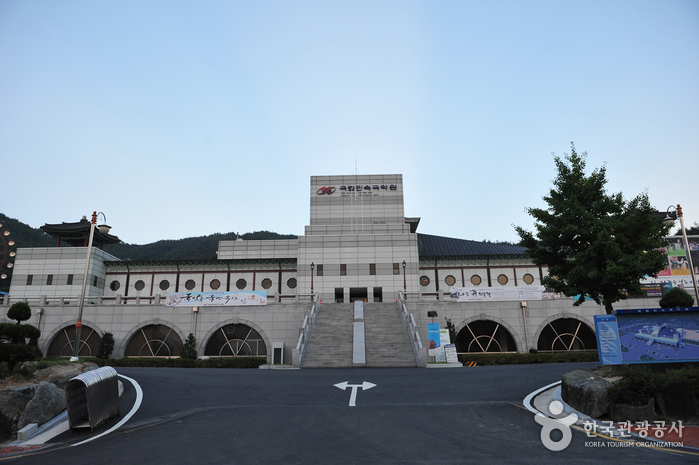
– Homepage
namwon.gugak.go.kr
– Tel
+82-63-620-2324
The Namwon National Gugak Center, located in the birthplace of pansori, invites visitors to the enchanting world of Korean folk music, a genre known for its explicit beauty. Opened in March 1992, the center offers a variety of regular folk performances and educational programs.
⊙ Namwon AirRail (남원에어레일)
View detailed guide on Korea Trip Guide →
– Homepage
www.namwontp.com
Namwon AirRail is a 2.44-kilometer monorail that circulates three stations: Chunhyang Theme Park within the major Namwon tourist resort; Hampawoo Korean Music Experience Center; and Namwon Aircraft & Space Observatory. It boasts an in-vehicle cooling and heating system and a comfortable interior space for eight people. Passengers can view the beautiful scenery of Namwon while moving along the high-altitude rail at a maximum x_height of 11.2 meters and feel as if they’re riding a luxurious roller coaster over the view along the sky road. As such, it offers a healing and thrilling experience.
⊙ Made hotel(메이드호텔)

– Tel
+82-63-634-8881
Hotel Made in Namwon, Jeollabuk-do, is 10-minutes’ walk from Gwanghalluwon Garden and Chunhyang Theme Park, and is popular with travelers seeking a beautiful night view and a comfortable rest. Many of the hotel’s business customers are connected to the large number of wind power facilities in the area, and the hotel is now equipped with a printer and fax machine. For simple meals, a microwave, free coffee beans, and toast are provided next to the front desk.
⊙ Namwon Aircraft & Space Observatory (남원항공우주천문대)
View detailed guide on Korea Trip Guide →
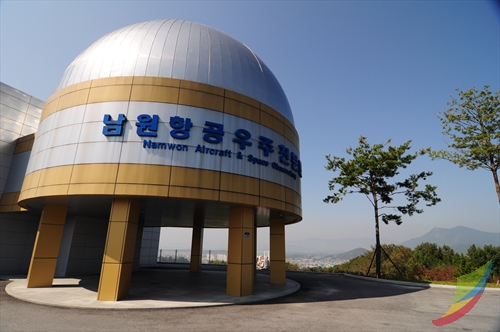
– Homepage
www.namwon.go.kr
– Tel
+82-63-620-6900
Chosen as a government funded project, Namwon Aircraft & Space Observatory was granted 4.6 billion won by the Ministry of Science, ICT and Future Planning in 2006 for project development.
The three-story observatory, with a total area of 6,532 square meters, has an exhibition hall showing the history of space aviation, an aviation experience hall, and a 10-meter-wide dome showing images of the night sky. The secondary observatory is equipped with a 600 millimeter telecope and other astronomical telescopes ranging in focal length from 125 millimeter to 350 millimeter for observing Namwon’s night sky. In addition to the telecopes, retired combat planes from the air force, including the main fighter plane Phantom from the 1970s, are displayed outside.
Namwon Aircraft & Space Observatory offers programs such as tours and experience programs for groups. These include a 4D film experience of the sun and celestial bodies, a virtual aviation experience, and lectures about astronomy, all of which can accommodate up to 120 people per session. A variety of classroom learning activities are also offered in the summer to attract more visitors.
⊙ Cheonghakdong Hoegwan (청학동회관)
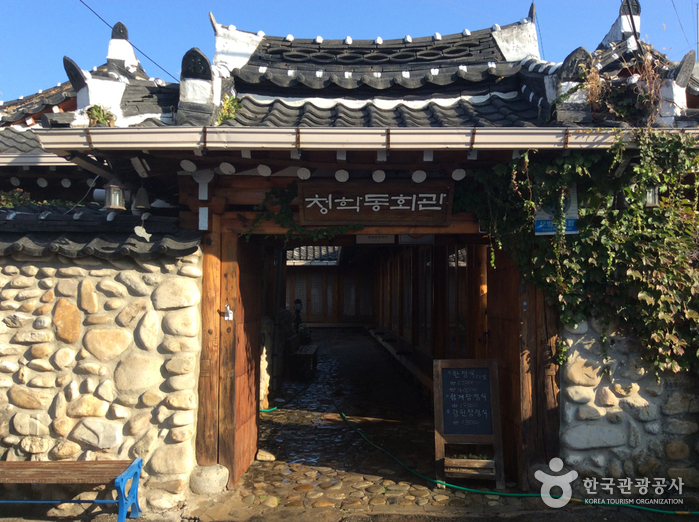
This restaurant has 60 years of tradition. As a traditional Korean house, it has a small pond with a watermill. The restaurant serves Namwon’s authentic Korean table d’hote, featuring about 20 dishes. The representative Cheonghakdong Set Menu includes Jeolla region’s delicacies, such as hongeo samhap (skate, pork, and kimchi combo), braised galbi, Yeonggwang gulbi (dried yellow croaker), and japchae. The restaurant also has private rooms for family and groups who wish to dine in a more quiet manner.
⊙ Gwanghallu Pavilion (광한루)
View detailed guide on Korea Trip Guide →

– Homepage
www.gwanghallu.or.kr
– Tel
+82-63-620-6172
Rebuilt in 1638 (the 16th year of King Injo), Gwanghallu Pavilion is one of the Joseon dynasty’s most exemplary structures. The pavilion was constructed in 1419 by Hwang Hui, a noted prime minister in the early Joseon dynasty, during his exile to Namwon. The name of the pavilion at that time was Gwangtongnu. In 1434, while the pavilion was undergoing reconstruction, scholar and politician Jeong In-ji called it Gwanghallu after Gwanghancheongheobu, the mythical palace on the moon. Designated as Treasure No. 281, the pavilion is one of four major pavilions known for excellent craftsmanship, along with Yeongnamnu Pavilion (Miryang), Chokseongnu Pavilion (Jinju), and Bubyeoknu (Pyeongyang). Gwanghalluwon Garden, which consists of Gwanghallu Pavilion, a pond, Bangjangjeon Pavilion, and Yeongjugak Pavilion form Historic Site No. 33.
⊙ Gwanghalluwon Garden (광한루원)
View detailed guide on Korea Trip Guide →
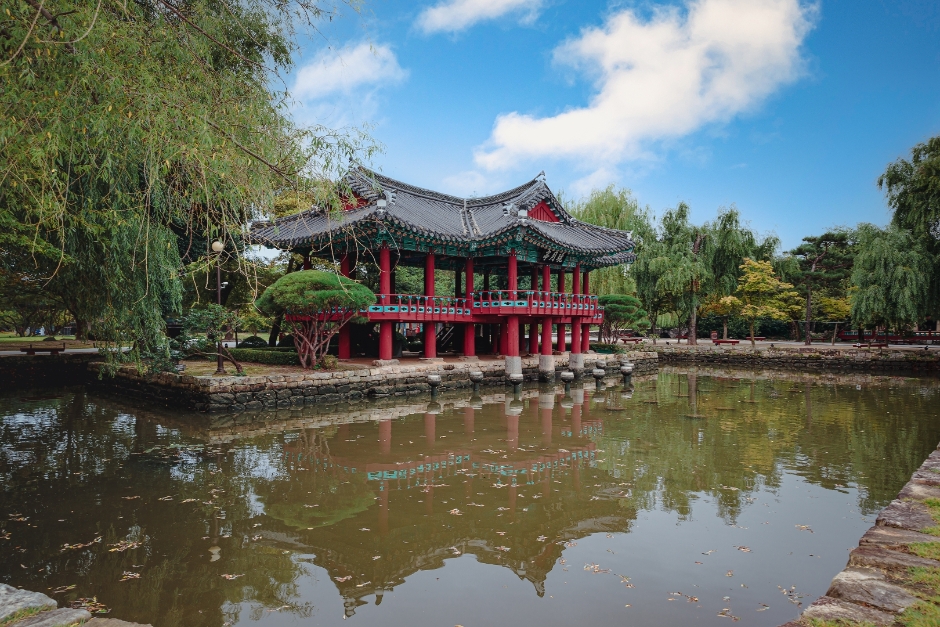
– Homepage
www.gwanghallu.or.kr
Originally known as Gwangtongnu, Gwanghalluwon Garden was built by Hwang Hui Jeongseung in 1419 during the reign of Joseon dynasty’s King Sejong. Because of its outstanding beauty, Governor Jeong In-ji gave the garden the name “Gwanghallu” in 1444, comparing it to a garden from the palace on the moon. It is famous as the location where Lee Mong-ryong and Chunhyang (two lovers from a well-known Korean folk story) first met. In the 1920s Chunhyangsa Temple was established in the neighboring area and a portrait of Chunhyang was hung in a place of honor. The garden is the venue of the Chunhyangjae Festival every spring, celebrating the deep and lasting love of the famous couple. The area around Gwanghalluwon Garden is full of many attractions, including Ojakgyo Bridge, symbolizing the bridge connecting Chilseok and Gyeonwu from the traditional story of Chilseok; and Chunhyang Hall, Wolmae-jip (house of Chunhyang’s mother), Wanwoljeong Pavilion, Yeongjugak Pavilion, Samsinsan and many other traditional buildings.
⊙ Namwonyechon by Kensington (남원예촌)

– Homepage
http://www.namwonyechon.com
– Tel
+82-63-636-8001
Namwonyechon in Namwon, Jeollabuk-do, combines the beauty of traditional hanok with the convenience of a hotel. In summer, rooms with daecheongmaru are popular, and in winter, you can cozy up to an oakwood fire. A hanbok experience, pansori and gayageum performances, and a traditional games experience are provided free of charge. Residents get a free entry pass with mapae(a certificate to allow officials to use horses) to nearby Gwanghalluwon Garden, Chunhyang Theme Park, and Baekdudaegan Ecological Education Center. Room minibars are also free of charge.
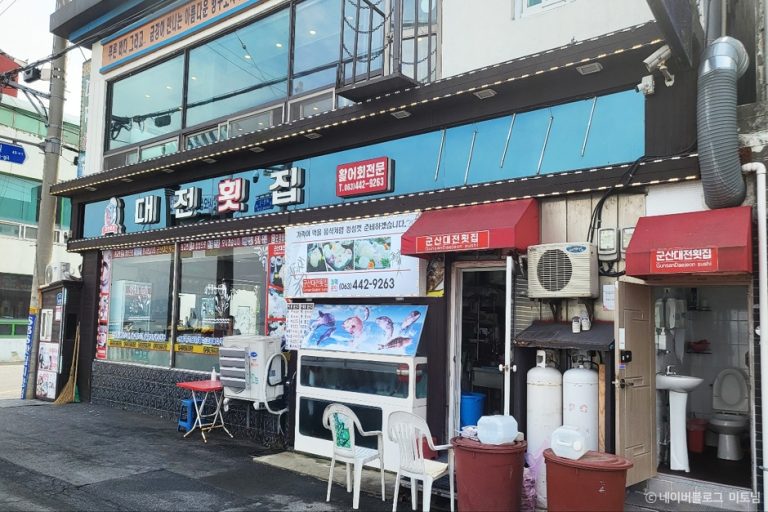
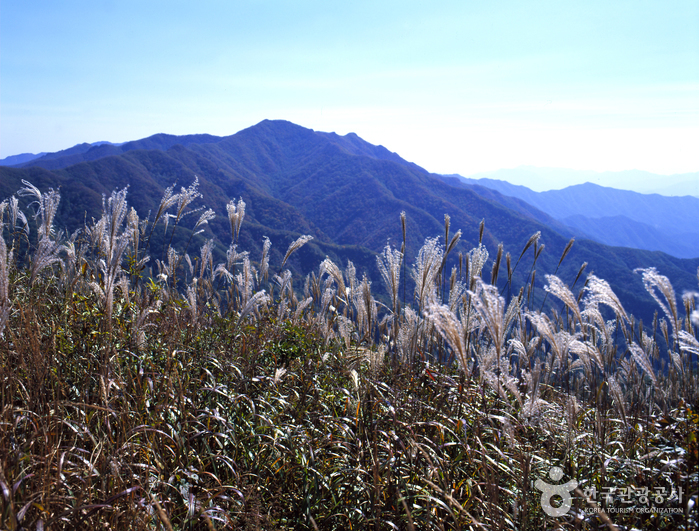
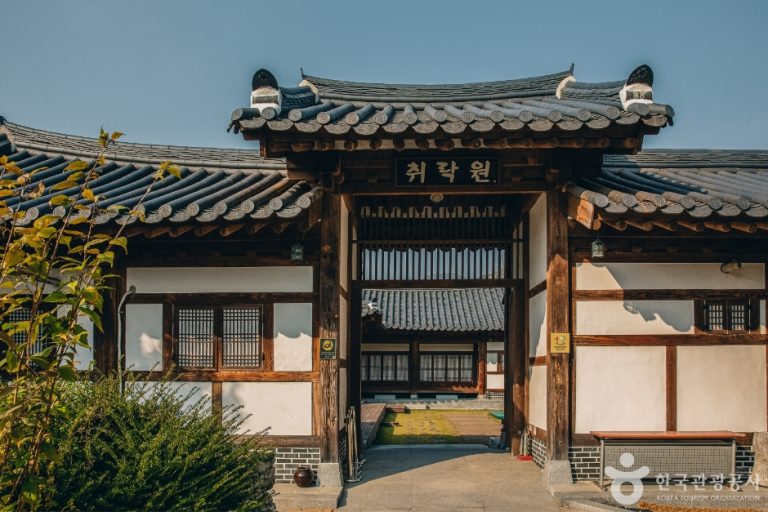
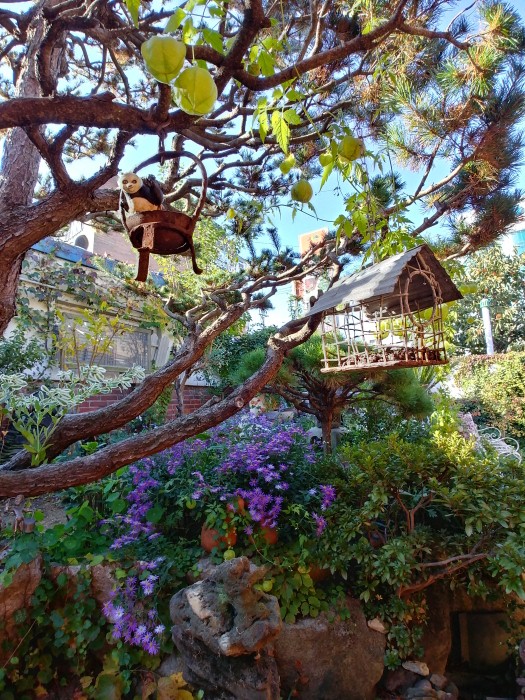
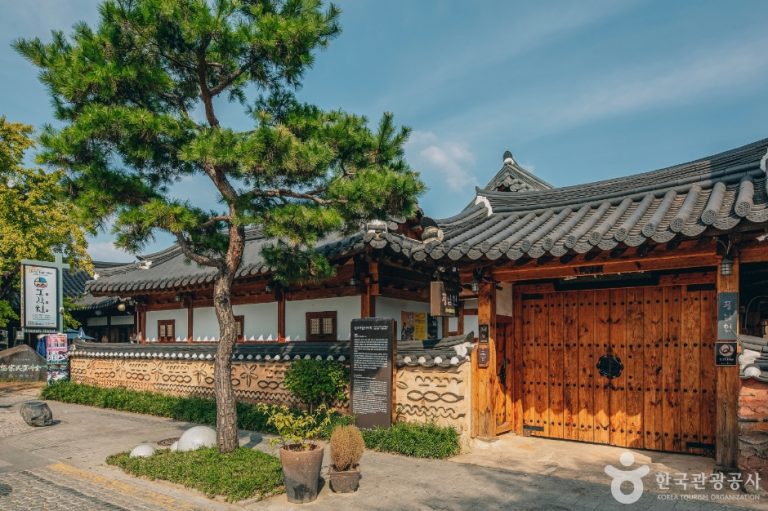
![[Jirisan Trail Course] Inwol-Geumgye](https://ktrip.blogsailing.com/wp-content/uploads/2025/11/1918173_image2_1.jpg)